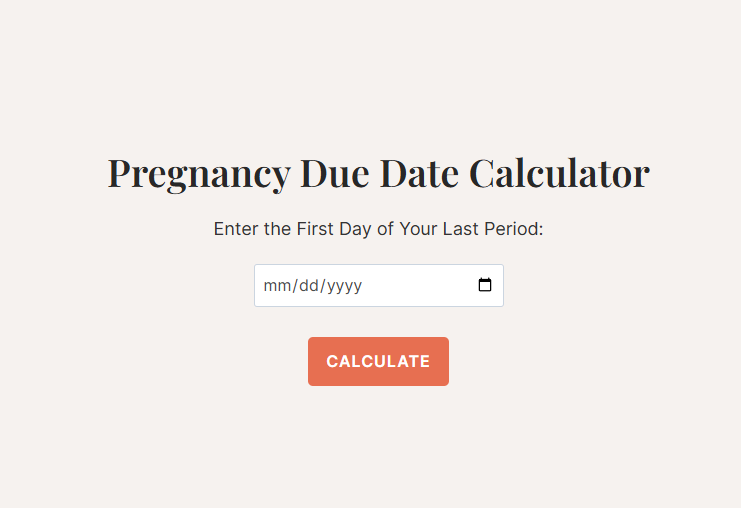Learning that you’re expecting is a thrilling experience, and one of the first things you’ll likely want to know is—when is my baby due? Although it’s impossible to know the precise date your baby will be born, determining your estimated due date (EDD) can provide you with an estimated time frame for when you’ll welcome your child.
The Most Popular Formula: Naegele’s Rule
Physicians and obstetricians frequently apply Naegele’s Rule, a straightforward formula using the first day of your last menstrual period (LMP). Here’s how it is calculated:
- Take the first day of your last period.
- Add one year.
- Subtract three months.
- Add seven days.
- If your last period began on May 1, 2024:
- Add one year → May 1, 2025
- Subtract three months → February 1, 2025
- Add seven days → February 8, 2025 (Your estimated due date!)

What If You Have Irregular Cycles?
What If You Have Irregular Cycles?
If your cycle is not the usual 28 days, your due date might be slightly off. Women with longer cycles tend to ovulate later and therefore get an earlier due date, while those with shorter cycles ovulate sooner and thus have a later due date. Your doctor will estimate your due date based on how long your cycles are.
Using Ultrasound for a Better Estimate
During early pregnancy, an ultrasound scan is the best method to determine your due date. In the first trimester, babies develop at a consistent rate, so it is simpler for your doctor to take measurements of the embryo and calculate a better EDD. If your ultrasound estimate and LMP-based estimate are far apart, your provider will probably use the ultrasound estimate.
Other Due Date Calculation Methods
Conception Date: If you are certain about the date of conception, add 266 days to calculate your due date.
IVF Due Date: In case you underwent in vitro fertilization (IVF), your physician will be able to identify the very date of embryo transfer and determine your due date based on the same.

Why Your Due Date May Alter
Remember that due dates are only an estimate! Only approximately 4% of babies arrive on their true due date, with most others arriving between 37 and 42 weeks. Your doctor might also change your due date depending on the progress of your baby.
Make It Easy: Use Our Pregnancy Calculator! –>
Final Thoughts
Your due date estimate provides a rough timeline, but all pregnancies are unique. Regardless of whether your baby is due right on time or catches you a bit off guard early (or late!), the key is to remain healthy and enjoy the process. If you do have questions regarding your due date, discuss it with your doctor or midwife—they are here to walk you through every step of your journey!
Frequently Asked Questions (FAQ)
❓ How do you determine your due date?
Your due date is calculated by counting 280 days (40 weeks) from the first day of your last menstrual period (LMP). In the case of irregular cycles, ultrasounds provide a more reliable estimate. Test our Pregnancy Due Date Calculator for a speedy answer!






